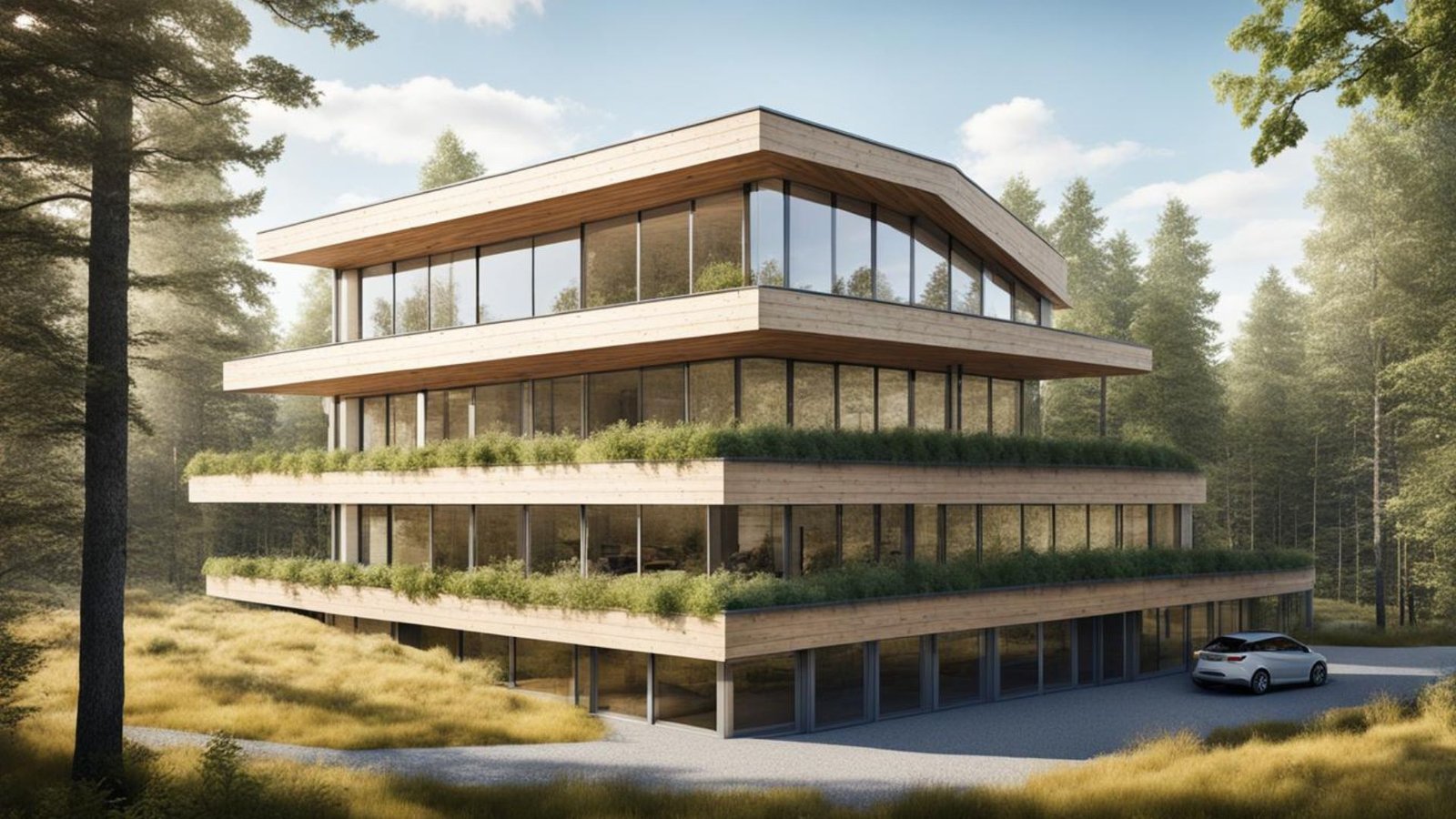Top Examples of Sustainable Architecture in Scandinavia
- By -Peter
- Posted on
- Posted in Modern Architecture
Ever wondered how Scandinavia, known for its stunning landscapes and progressive values, leads the way in sustainable architecture? From energy-efficient homes to innovative cultural centres, sustainable architecture in Scandinavia sets global benchmarks for eco-friendly building practices. Let’s take a look at some standout examples that showcase how Scandinavian architects blend environmental consciousness with cutting-edge design.
Sustainable Architecture in Scandinavia
The Crystal, Stockholm: A Beacon of Sustainability
In the heart of Stockholm, The Crystal stands as a testament to sustainable architecture. This multifunctional building houses offices, an exhibition hall, and an event space—all powered by renewable energy sources. Solar panels and geothermal heating systems minimize energy consumption, while rainwater harvesting and wastewater recycling reduce water usage. The Crystal demonstrates how modern technology and design can harmonize with nature to create a truly sustainable urban environment.

Green Lighthouse, Copenhagen: Net-Zero Energy Building
Copenhagen’s Green Lighthouse is Denmark’s first carbon-neutral public building. Designed as a living laboratory for sustainable practices, it produces more energy than it consumes thanks to solar panels and energy-efficient systems. Natural ventilation, daylight harvesting, and a green roof further enhance its environmental performance. As a beacon of innovation, Green Lighthouse showcases how net-zero energy buildings can contribute to reducing carbon footprints in urban settings.
C.F. Møller Architects, Aarhus: Integrating Nature
C.F. Møller Architects’ work in Aarhus exemplifies Scandinavian architecture’s integration with nature. Projects like the Moesgaard Museum and the Aarhus University Hospital prioritize natural materials and green spaces. These designs not only minimize environmental impact but also enhance the well-being of occupants by connecting them with their surroundings. C.F. Møller Architects demonstrate how sustainable architecture can foster a symbiotic relationship between built environments and natural landscapes.
The Plus Energy House, Gothenburg: Generating More Than It Consumes
Gothenburg’s Plus Energy House is a pioneering example of sustainable housing design. This residential building produces more energy than it consumes, thanks to its solar panels and efficient energy systems. Innovative insulation and passive solar design principles ensure minimal energy waste. The Plus Energy House showcases how sustainable homes can be affordable, comfortable, and environmentally responsible, setting a precedent for future residential developments.
The Edge, Amsterdam (by Norwegian Architects): Smart and Sustainable Office
Although not strictly in Scandinavia, The Edge in Amsterdam, designed by Norwegian architects, embodies Scandinavian principles of sustainability. This smart office building maximizes energy efficiency through intelligent lighting, climate control systems, and rooftop solar panels. Its innovative use of sensors and data analytics optimizes workspace usage and energy consumption. Hence, making it one of the most sustainable office buildings in Europe.
Conclusion
Scandinavia’s commitment to sustainable architecture goes beyond aesthetics—it’s a reflection of cultural values and environmental stewardship. By prioritizing energy efficiency, renewable resources, and harmonious integration with nature, Scandinavian architects have set global benchmarks for sustainable building practices. These examples—from The Crystal’s renewable energy solutions to Copenhagen’s net-zero Green Lighthouse—inspire architects worldwide to embrace eco-friendly design principles and create buildings that not only stand out architecturally but also contribute positively to the planet.
As we continue to address global challenges like climate change and urbanization, sustainable architecture in Scandinavia offers a compelling model for creating resilient, livable cities and communities. By learning from these innovative projects and applying their principles globally, we can build a sustainable future where architecture not only enhances human life but also preserves the natural environment for generations to come.



